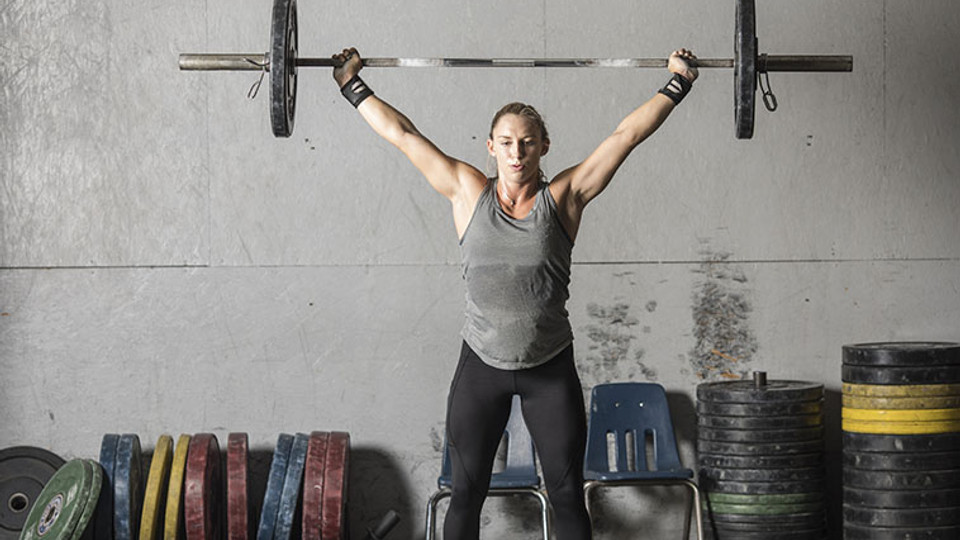
The overhead press is a type of weightlifting shoulder press with quite a few variations (that I’ll go into in more detail in a future article).
If you do the overhead press correctly, with good technique, following progressive overload throughout, you will build large, strong shoulders. In addition, your arms will swell up as your triceps come into the pressing motion, your upper back will strengthen as it supports the weight, and your breath and brace will come into play in a big way (more on this below).
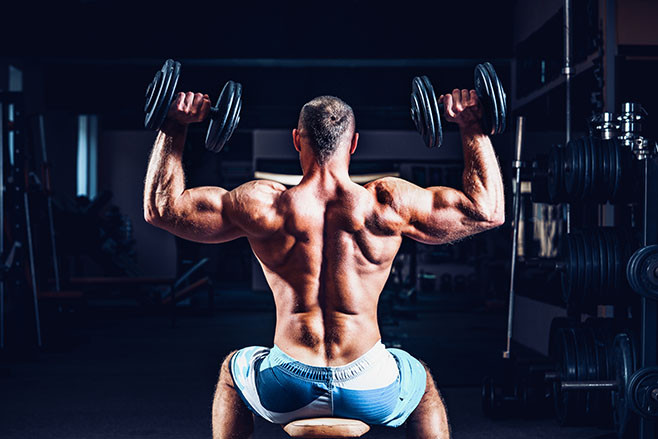
The overhead press is one of the most challenging yet rewarding exercise you can incorporate into your upper body regime. I devote a full session every week to training it, with increasing weight on the bar being my main goal. Whether you’re looking for size, strength or conditioning from your training, the overhead press will serve you well.
How to perform the overhead press: the basics
Getting the overhead press right is a years-long project. I’m pretty decent at it, but I know I won’t be anything like an expert for another decade or so (and maybe not even then!)
But the first step in getting good at anything is to begin- let’s begin right, setting you up for success with correct form.
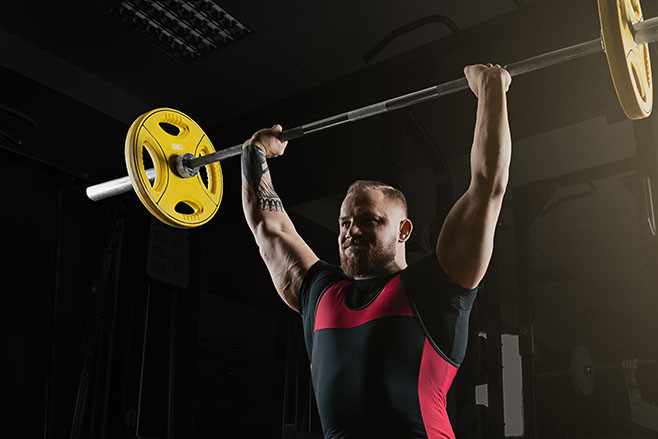
To overhead press correctly:
- Take the bar into the rack position, with the bar resting on your front deltoids.
- Have your hands on the bar just outside shoulder-width apart, taking the bar’s weight in your palms.
- Raise your chest towards the ceiling by arching your upper-back. Try to touch your chin with your upper chest.
- Keeping your chin tucked in, press the bar overhead.
- The bar should end up above the midpoint of your head, set back slightly from your shoulders.
- At the top, lock out your elbows. If you need to, rebreathe her. keep your core tight and braced throughout.
- Hold the bar at the top for a second, then lower it back down to an inch or so above its starting point. Repeat for the required rep count.
- For a strict press, keep your legs straight and your glutes tight. For heavier loads, feel free to use a little leg drive.
Why does the overhead press matter?
The overhead press is a full body, compound exercise.
Though it’s mostly of use in building up your shoulders and arms, there is a lot more at work. Your legs work throughout, bringing tension to the lift and keeping you balanced. Your core and lower back take a lot of strain as the downward pressure from the bar hits them. As antagonists and further stabilisers, your lats and biceps take a lot of isometric tension.
All in all, if you bring heavy overhead presses into your routines will give you huge upper body gains in strength and hypertrophy.
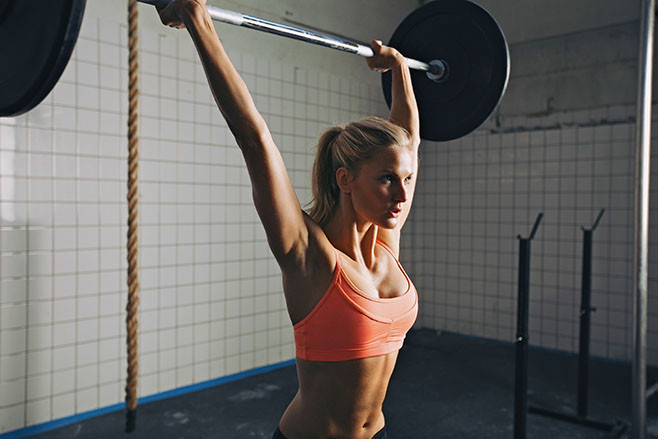
Lots of people come to the overhead press through 5×5 Strong Lifts. This should tell you something: it’s a foundation of any strength-based program, valued far more highly in the Strongman community than the bench press.
You won’t be able to handle much weight on the overhead press. As it uses smaller muscles, in a relatively poor mechanical position, there will be far less on the bar than you would move for the squat, deadlift and bench press. Progress is hard fought for as well: you will likely add weight more slowly than the others.
Don’t let this put you off. It’s a sign of the press’ efficacy more than anything.
However, there are ways to increase your overhead press outside of mere brute strength: more than most other lifts, the overhead press relies on good form. There’s no cheating it. The better your form is, the less you will struggle.
So, let’s get your form right.
How to perform the overhead press: pro tips
These are all tips and prompts that have helped me to get better at my overhead press. Doing just one or two of these will immediately put a few kilos on the bar. Doing all of them just right will put substantially more on.
Brace your core
This is the most important thing on this list. If you do nothing else, pay attention to this one- and pay attention to it for all your other lifts, too.
You cannot lift well without your core being engaged. Imagine trying to fire a cannon from a canoe, as an old coach of mine used to put it. The force of the canon is wasted as the canoe rocks and tumbles. Fire that same canon from solid ground and the result will be a lot stronger.
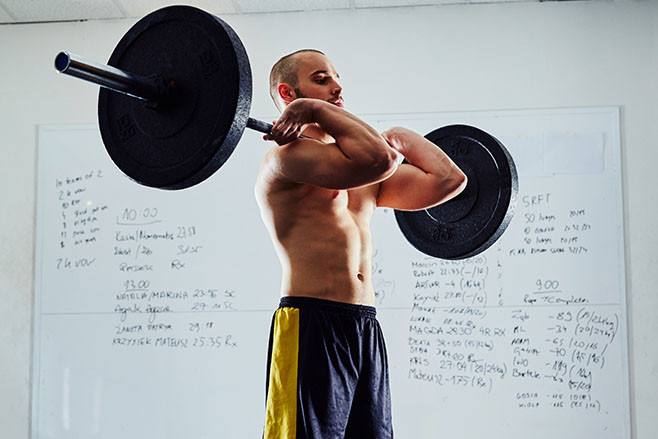
Breathe and brace before you approach the bar. Keep your breath in and your core tight throughout, rebreathing at the top of the lift if you need to. If you’re going for 1-3 reps, try to get it all in one breath to stop wasting any of that tension.
More information on the breath and brace and what it can do for your lifts can be found here.
Get your grip right
People often try for a wider grip on their overhead press. This makes sense at first: it makes the bar path a lot shorter, meaning you’ll get it into position without pushing it so far.
However, I advocate a closer grip. Just outside of shoulder width should do it- I mean just outside, by a centimetre or two.
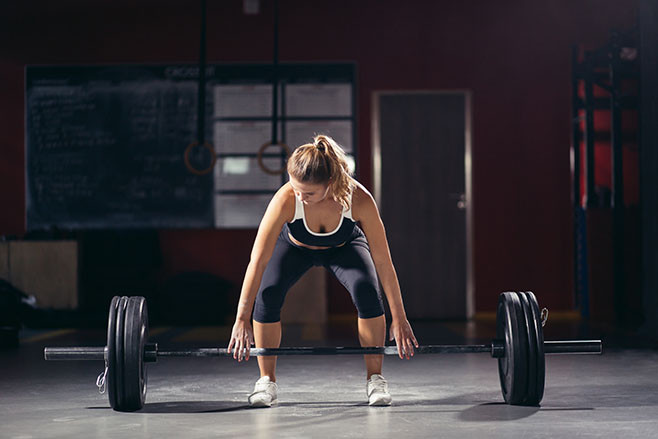
This will give you a couple of advantages.
First, look at the makeup of the active muscles. Your shoulders are quite small compared to other muscle groups. They need as much help as they can get if you want to put big numbers in. Bringing your grip closer together will bring in a lot more triceps activation and power. It also allows you to keep your elbows tucked in a bit more, which will allow your lats to come into play through the movement.
All of this works to give you far more muscle mass to work with.
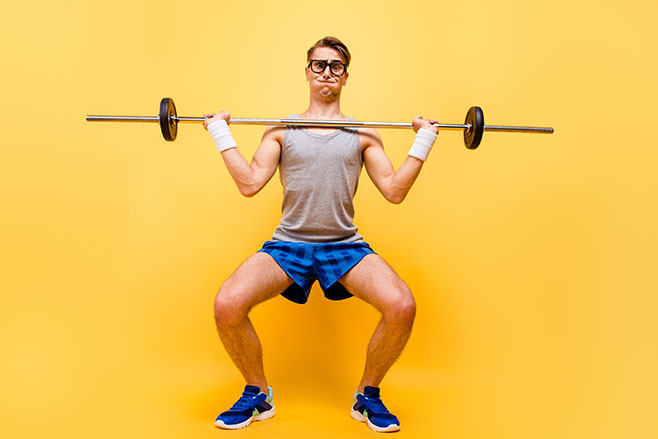
Secondly, going too wide can disturb your centre of gravity. Imagine a pillar running in a straight line from your head to the floor. Broadly speaking, this is your centre of gravity. To reduce any unwanted directional forces, and to keep external leverages down, you want to keep the weight along this line for maximum efficiency- the bar being forwards of this point is a large part of the reason why front squats are so much harder than back squats.
Pushing with a closer grip allows you to move along this line quite smoothly. Flaring your elbows through a wider grip can disturb this.
Use your quads
It’s a full body lift, not just a shoulder exercise. Therefore, use your full body.
Top of the list of muscles you want to bring to bear on this exercise is the quadriceps- the meaty muscles in your thighs. So many overhead press variations involve leg drive- push press, jerk and so on- that you need to have this power ready to use.
In addition, having a tight posterior chain on top of a solid base- in the form of powerful legs (i.e. quads) will always add more stability and upward driving force to even the strictest of strict presses.
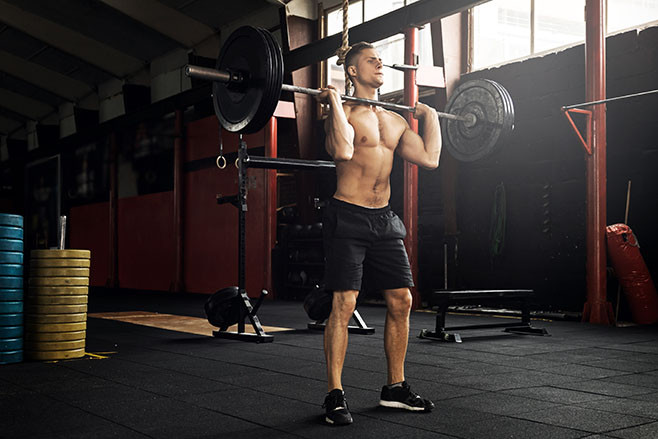
For stronger overhead presses, don’t make the lifts glute heavy- bring those quads in. Rather than hinging your hips back as most people do, break forwards with your knees. This will stop you from taking it away from your centre of gravity, keeping it in line instead, and will allow your legs to help push upwards.
This will be crucial in the push press. Keep the bar in your centre of gravity- break at the knees and use the strength of your quads to drive the weight upwards.
Keep your head back
Many people keep their chin up and look where they’re pressing throughout the overhead press. This is a mistake. Though you quite rightly want to avoid hitting your chin with the bar, there are better ways to keep your face out of danger.
However, this will force the bar slightly forwards as it loops around your face, once more taking it away from your centre of gravity. It will also take your body out of brace.
You don’t ever want a barbell to move around your body. Rather, move your body around the bar. This will ensure the correct bar path and will always keep your movements as efficient as possible.
To this end, retract your head. Make a double chin and be proud of it. Then the bar should pass your face entirely without having to curve out of the way.
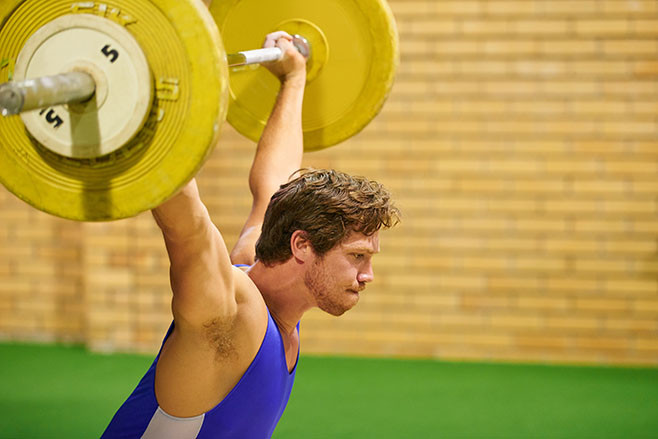
At the top, you will want to bring your face forwards as you hit lock out: this will complete the lift and get it locked at the top in your centre of gravity. One of my favourite analogies is to think of opening a window and sticking your face out: the bar is the window, push it up, then stick your face through.
There we have it: four top tips to improve your overhead press today. Making progress isn’t always about programming progressive overload, adding small amounts of weight over time. Whilst this will form the bulk of your gains, smaller tweaks and pro-tips here and there can make a massive difference: follow these four to immediately increase your pushing power.




